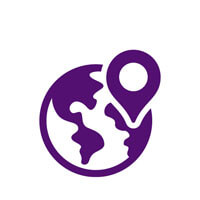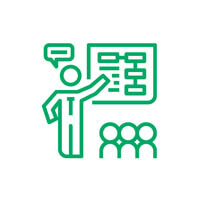As is becoming a good tradition on our blog we are doing a bit of glass ball glazing and are putting together our predictions and trends for 2020. The trends I generate are an amalgamation of what I see happening in the market place, the trends I follow in business in general, market research and what clients ask for more frequently.
1.Market consolidation on one side, more start-ups on the other

Last year I mentioned market consolidation and I see more of the same happening again. Business applications businesses are buying up smaller gamification platforms. Especially larger entreprise application businesses that are struggling for engagement with their older designs are looking to improve workflows by either adding gamification into their core applications and for many the quickest route of doing this is by buying up existing platforms with some traction.
On the startup side, there has been no real stop of new platforms and applications entering the market. Some are full gamification platforms, others on very specific segments either in marketing, HR or learning. In most technology startups gamification will be part of the initial design of the software and will feature at some point not too far behind the minimum valuable product stage.
In my view, the reason why I see this happening is that more and more proof is coming out that gamification is a desired and helpful feature and more and more positive use cases are appearing in most sectors of business. For those of you keen on statistic dumps about gamification, I will refer you to the article that appeared late in 2019 in Finances online.
2. Blended and immersive

The mixing of technologies is more and more seen as valuable. We have carried out many mixed reality projects that combined a physical game with a digital exercise as well as classroom training and even one or two augmented experience as part of the mix. The battle for attention and engagement is not going to let up any time soon, which in my view will drive the requirement for gamified experiences to be more and more blended and of a mixed reality nature.
It may make sense to bring someone into a virtual world to live through an experience to give a firsthand perspective of how this feels. Even an overview or godlike perspective on a given situation can provide valuable lessons. In the work of behaviour change, we know that change starts with an awareness that the current way of doing something is not getting the right results and on an emotional level it is frustrating to the point of actually wanting to change. In my formula for behaviour change through gamification this is a key feature.
What makes an experience immersive is when the person loses track of time because they are so engrossed in the experience itself. In a work environment, we can often experience this when we are totally engrossed in working on something that is valuable and you don’t see time fly. In my view, workplace gamification should be the vehicle to nudge for this to happen. Focus mode on some applications allow you to blank out distractions which help immersion and then feedback on what will get you closer to the finish line is what works for games and we see also work in a work environment.
Narrative designs, heads up displays and the development of a compelling journey often in encapsulated in a challenge is how we see a lot of workplace engagement happening today and for the year ahead.
3. Climate and sustainability as key focus

With climate change on top of the agenda in many workplaces, it should come as no surprise as this is where we see the big influx of gamified applications. From short term campaigns around a specific project to more widespread enterprise action. Reporting on climate and sustainability was a starting point a few years ago but thanks to the activism by young people, we see similar approaches entering the workplace as well as some governments (insofar that they are not in denial of course).
We can all do better when it comes to our impact on climate change, from recycling to planting trees to buying more local produce in sustainable packaging. From a commuter perspective, we have a fun application design coming up in collaboration with the City of Bruges in Belgium, which we will be reporting on as and when we work on the project because it is for once totally encouraged. So watch this space for updates.
In most multinationals, the corporate sustainability team has been reporting on how climate actions are taken within the company. For the average employee, this typically meant very little change to their regular routine. Gradually we see this making way for a conscious and overt approach by companies to encourage their people to take the most climate responsible action. Supporting it with a gamified process is there the next step.
What I expect to be more in demand this year than most of the previous is to encourage positive action as opposed to encouraging a feelgood factor. Personally I think it is good to see this transformation and let’s hope we can see it delivering results when enough people sign up and do their bit for our planet.
4. Multi-device in a world full of bring your own device organisations

Bring your own device has been the norm in a lot of startups for some time, larger organisations tend to be slower in the uptake of this kind of action largely due to security and existing procurement policies. From a gamification perspective, this has meant that most of the time when we scope a project we need to make sure that all device types can be facilitated.
In the world of legacy systems in traditional industries, this is not always feasible yet desirable. It is something we have had to face a number of times in previous years and often we had a segment of the workforce where access to a gamified process was more challenging than for others. I think in this day and age more and more companies will expect gamification processes to work seamlessly between mobile, tablet, laptop and desktop.
In most cases with modern browsers and operating systems, this can be made to work, but the days of saying it only works on this operating system or this mobile set-up are no longer negotiable. Cross-platform and cross-device is and will continue to be on the increase. Knowing the base requirements and capabilities will be a continuous learning curve for most gamification practitioners.
5. AI and adaptivity inside

Adaptivity to the player or end-user has been on the trends list before and I continue to see it as an increasingly important feature in gamification. By adapting to the users’ abilities or lack thereof an application truly proves its use. Most of us keep using something that we consider helpful and that nudges us towards our goals, whereas we stop using it once we see the one size fits all feedback. The systems we use at home such as Netflix and Amazon are the reason why more and more people request their workplace tools to have similar capacities of recommending what is useful or could be interesting for you. When it comes to habit building it has a place.
Artificial intelligence and algorithms that power this adaptivity will be on the increase inside gamified processes and applications. I see them assisting in a more personalised manner but also expanding what can be given feedback on. For example, we are working on a learning application where we are exploring the use of a personality profiling algorithm to improve communication skills in a customer service setting.
With artificial intelligence developing further we need to be aware of how this can be put to use in a positive and ethical way to improve workplace gamification. I can see many positive and also many less savoury approaches, so ethics will be key in this equation. It will be our role as gamification designers to point out when ethics become questionable.
6. Voice-enabled

At home, voice-enabled devices have found their way and gamification has equally found its way into the home like this. Think of it as your conversational partner in a task where you talk to each other and get things done. In the workplace, this technology is not always practical but in settings where machinery requires both hands on a steering wheel and eyes on the road, voice-activated technology is helpful. Making voice technology gamified requires you to think of how you would like to be encouraged or praised in that particular setting. Or on the flipside reprimanded and punished. If you have ever had an ongoing conversation with your route finding device in the car because you took a different turn than suggested, you know how this works.
If you are already working with virtual reality and gamification then voice-enabled nudges and warnings will come as no surprise. For many who are coming from the eLearning and systems application design space, this will be a learning curve to adapt to conversational feedback. I think the more we see voice-activated devices entering the world of work, the more we will find the need for voice-enabled feedback loops in this space too.
In the sum up of the gamification trends and predictions for 2020, I would see the market continuing to grow albeit at a more relaxed pace than in previous years. More traditional sectors are joining in the fun and are looking for more tried and tested versions of gamification to implement in their more risk-averse environments.
You can read up on the previous years trends on the links below:
https://gamificationnation.com/gamification-trends-for-2019/
https://gamificationnation.com/gamification-trends-2018/



